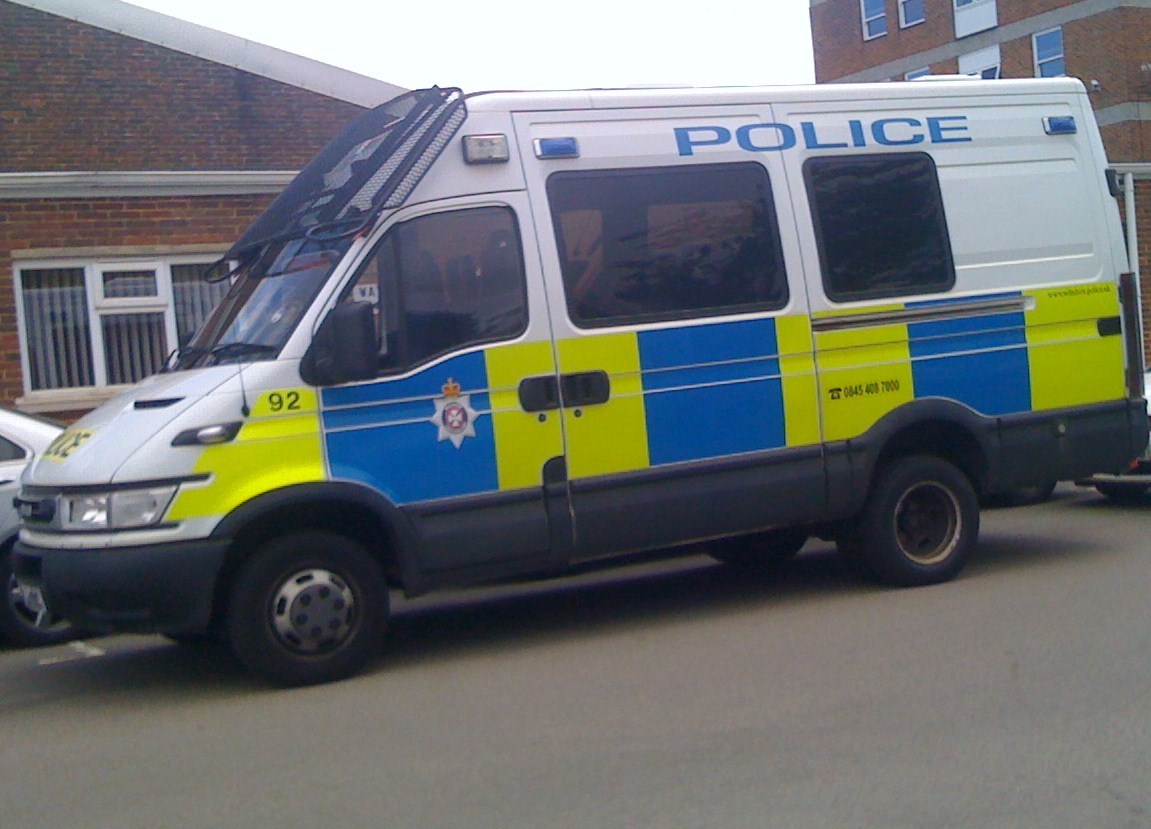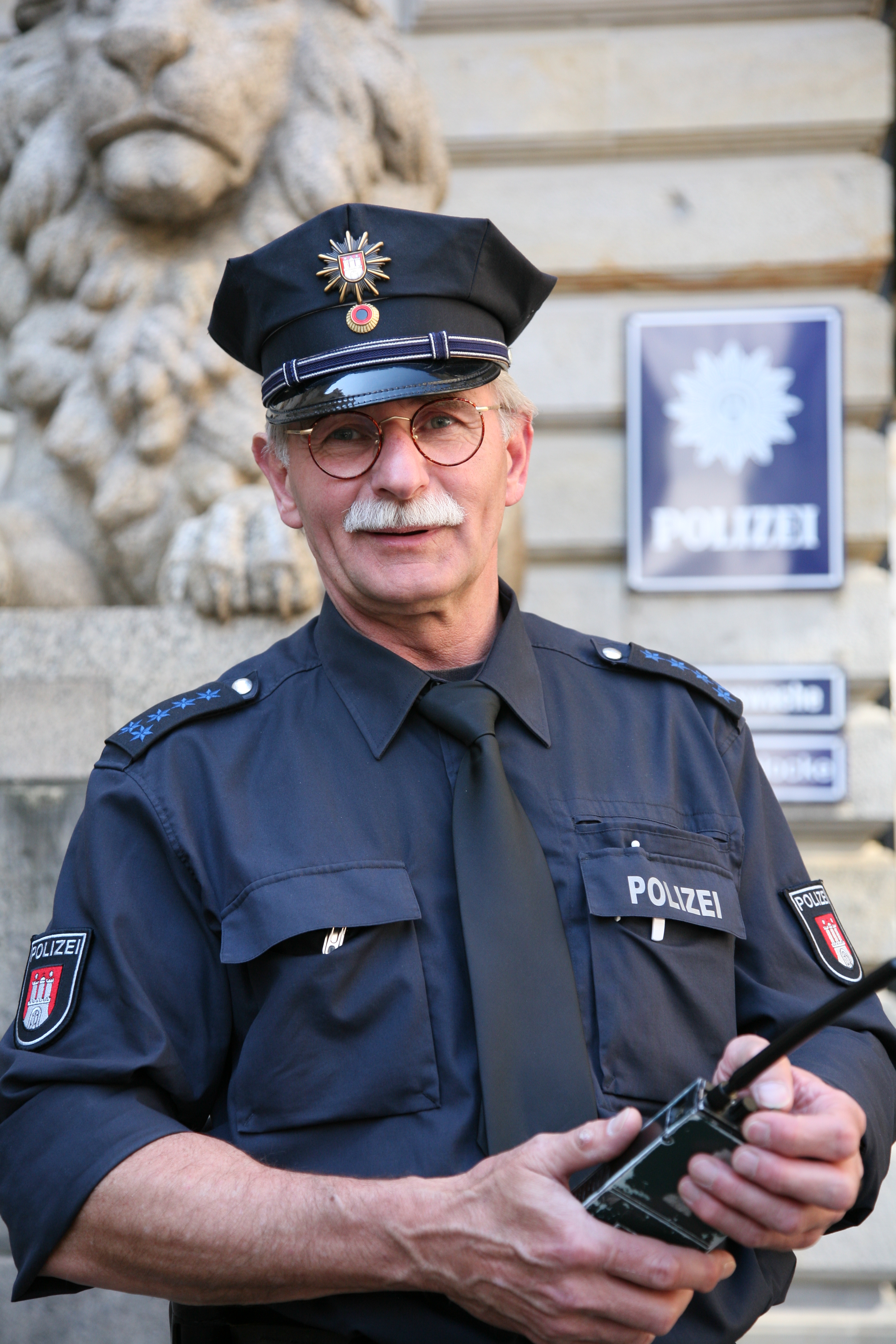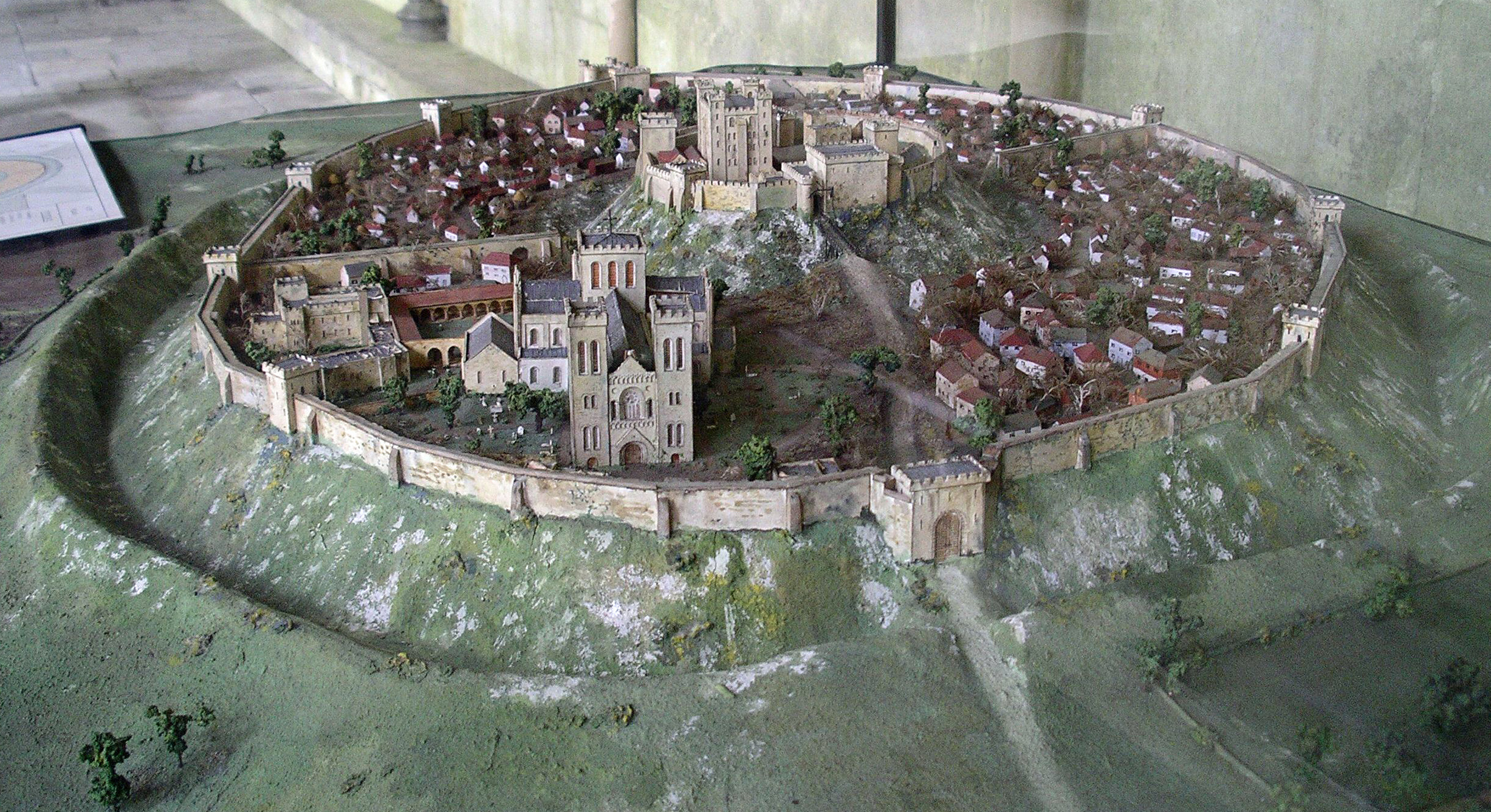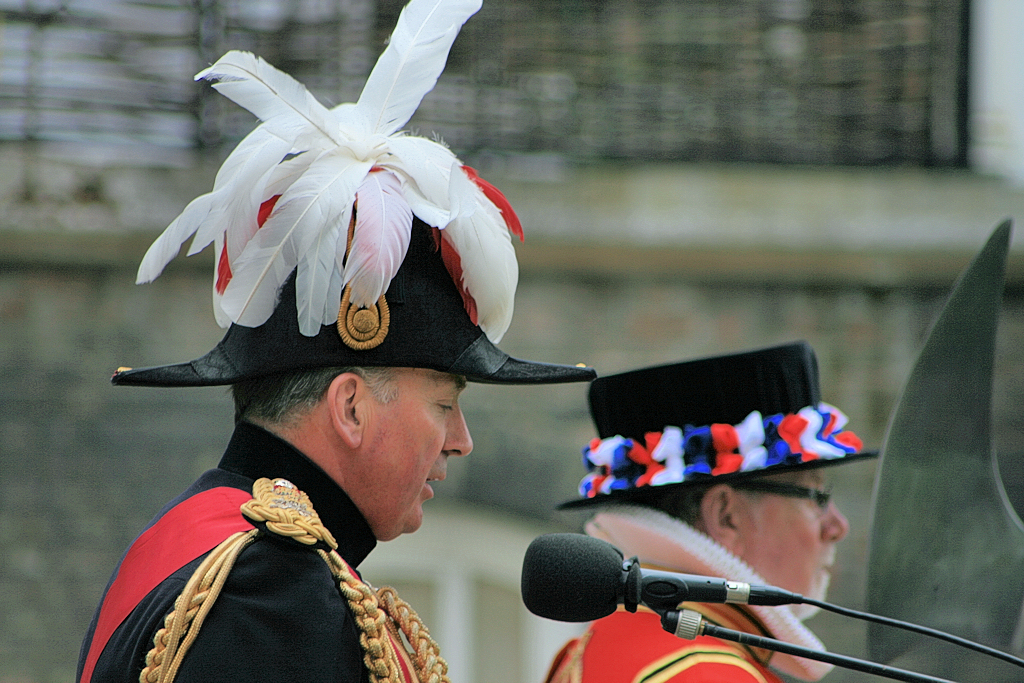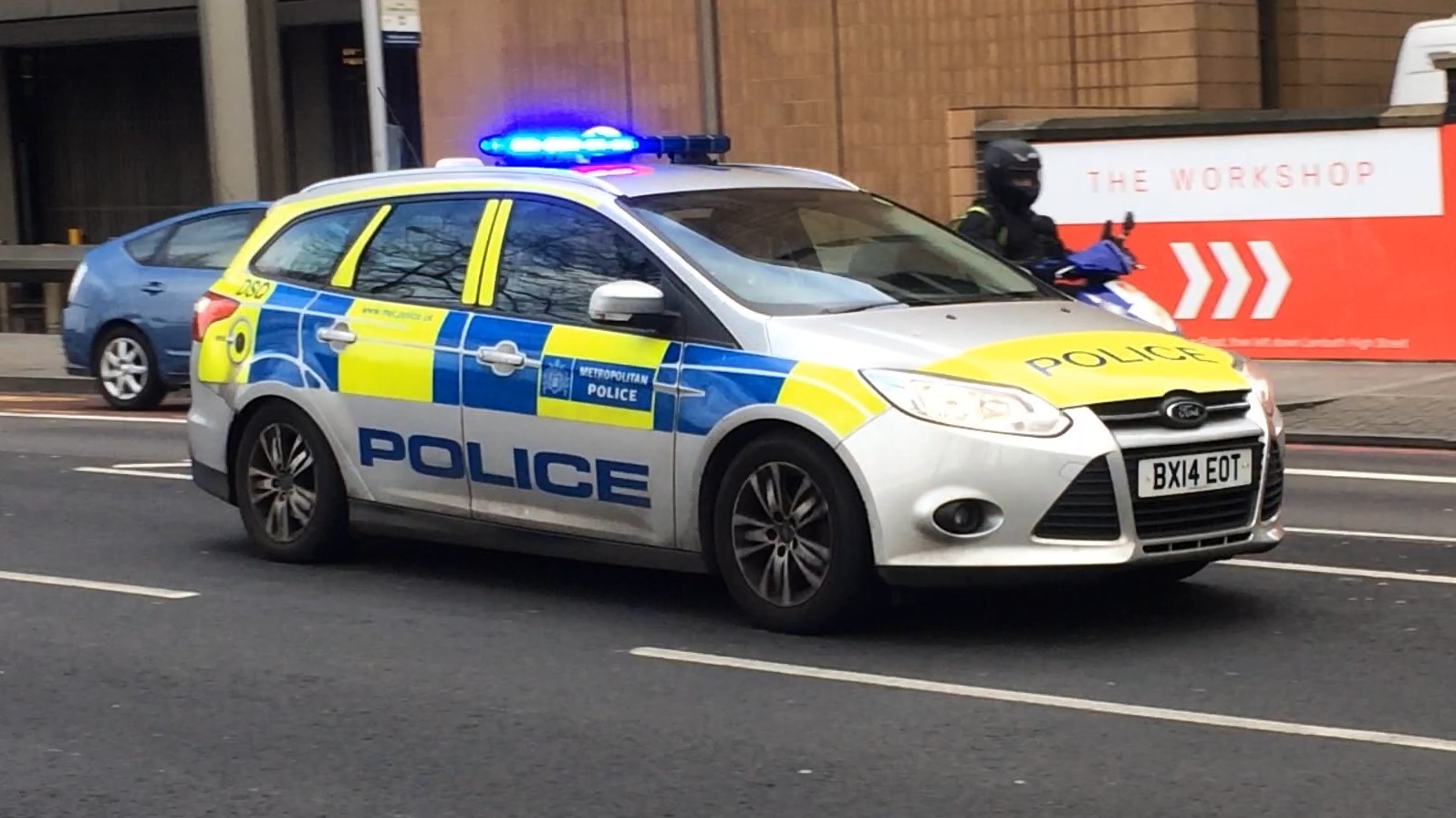|
Salisbury City Police
Salisbury City Police was a British police force that existed officially between 1835 and 1943. It was absorbed by Wiltshire Constabulary during the Second World War. History Policing in Salisbury, previously known as New Sarum, can be traced back to the 18th century when a local militia known as Brodie's Volunteers were instructed to watch over the city. They were overseen by the Salisbury Watch Commission who decided to disband the thirteen constables in 1836 in favour of forming a more official-looking organisation. The new force called 'New Sarum Police' was to consist of one 'Superintending High Constable', one 'High Constable', four 'Day Constables' and ten 'Night Constables'. In May 1836 the decision to dress the constables in a new uniform was made; it was to be similar to other forces with the letters 'NSP' (New Sarum Police) on the collar. Police stations were created on Endless Street and Salt Street. In April 1838, New Sarum Police was disbanded and reorganised in ... [...More Info...] [...Related Items...] OR: [Wikipedia] [Google] [Baidu] |
Wiltshire Constabulary
Wiltshire Police, formerly known as Wiltshire Constabulary, is the territorial police force responsible for policing the county of Wiltshire (including the Borough of Swindon) in South West England. The force serves 722,000 people over an area of . In terms of officer numbers, it is the second smallest force in the United Kingdom (after the City of London Police). History Before 1830s Prior to the 1830s, policing in Wiltshire was the responsibility of petty and parish constables, who were supervised by magistrates. This was largely ineffective as they were unpaid and untrained, and so independent and forces made up of private citizens such as the Devizes Prosecution Society emerged, and these did not immediately disappear when professional police forces came into being. The Yeomanry Cavalry was active in Wiltshire during this period and utilised as a quasi-police force. 1830s The Municipal Corporations Act 1835 standardised the structure and responsibilities of borough co ... [...More Info...] [...Related Items...] OR: [Wikipedia] [Google] [Baidu] |
Municipal Corporations Act 1835
The Municipal Corporations Act 1835 ( 5 & 6 Will. 4. c. 76), sometimes known as the Municipal Reform Act, was an act of the Parliament of the United Kingdom that reformed local government in the incorporated boroughs of England and Wales. The legislation was part of the reform programme of the Whigs and followed the Reform Act 1832, which had abolished most of the rotten boroughs for parliamentary purposes. Royal commission The government of Lord Grey, having carried out reform of parliamentary constituencies, turned its attention to local government. In February 1833 a select committee was appointed "to inquire into the state of the Municipal Corporations in England, Wales, and Ireland; and to report if any, and what abuses existed in them, and what measures, in their opinion, it would be most expedient to adopt, with a view to the correction of those abuses". The committee made their report in June 1833, having inquired into a handful of boroughs. The committee found that ... [...More Info...] [...Related Items...] OR: [Wikipedia] [Google] [Baidu] |
Police Force
The police are a constituted body of people empowered by a state with the aim of enforcing the law and protecting the public order as well as the public itself. This commonly includes ensuring the safety, health, and possessions of citizens, and to prevent crime and civil disorder. Their lawful powers encompass arrest and the use of force legitimized by the state via the monopoly on violence. The term is most commonly associated with the police forces of a sovereign state that are authorized to exercise the police power of that state within a defined legal or territorial area of responsibility. Police forces are often defined as being separate from the military and other organizations involved in the defense of the state against foreign aggressors; however, gendarmerie are military units charged with civil policing. Police forces are usually public sector services, funded through taxes. Law enforcement is only part of policing activity. Policing has included an array of ac ... [...More Info...] [...Related Items...] OR: [Wikipedia] [Google] [Baidu] |
Salisbury
Salisbury ( , ) is a city status in the United Kingdom, cathedral city and civil parish in Wiltshire, England with a population of 41,820, at the confluence of the rivers River Avon, Hampshire, Avon, River Nadder, Nadder and River Bourne, Wiltshire, Bourne. The city is approximately from Southampton and from Bath, Somerset, Bath. Salisbury is in the southeast of Wiltshire, near the edge of Salisbury Plain. An ancient cathedral was north of the present city at Old Sarum Cathedral, Old Sarum. A Salisbury Cathedral, new cathedral was built near the meeting of the rivers and a settlement grew up around it, which received a city charter in 1227 as . This continued to be its official name until 2009 structural changes to local government in England, 2009, when Salisbury City Council was established. Salisbury railway station is an interchange between the West of England line, West of England Line and the Wessex Main Line. Stonehenge, a UNESCO World Heritage Site, is northwest o ... [...More Info...] [...Related Items...] OR: [Wikipedia] [Google] [Baidu] |
New Sarum
Salisbury ( , ) is a cathedral city and civil parish in Wiltshire, England with a population of 41,820, at the confluence of the rivers Avon, Nadder and Bourne. The city is approximately from Southampton and from Bath. Salisbury is in the southeast of Wiltshire, near the edge of Salisbury Plain. An ancient cathedral was north of the present city at Old Sarum. A new cathedral was built near the meeting of the rivers and a settlement grew up around it, which received a city charter in 1227 as . This continued to be its official name until 2009, when Salisbury City Council was established. Salisbury railway station is an interchange between the West of England Line and the Wessex Main Line. Stonehenge, a UNESCO World Heritage Site, is northwest of Salisbury. Toponymy ''Cair-Caratauc'', one of 28 cities of the Ancient Britons listed in the ''History of the Britons'' (9th century), has been identified with Salisbury. Alternative names for the city, in the Welsh '' Chr ... [...More Info...] [...Related Items...] OR: [Wikipedia] [Google] [Baidu] |
Police Constable
A constable is a person holding a particular office, most commonly in law enforcement. The office of constable can vary significantly in different jurisdictions. ''Constable'' is commonly the rank of an police officer, officer within a police service. Other people may be granted powers of a constable without holding this title. Etymology Etymologically, the word ''constable'' is a loan from Old French ''conestable'' (Modern French ''connétable''),p. 93b-283a, T. F. Hoad, ''The Concise Oxford Dictionary of English Etymology'' (Oxford University Press, 1993) itself from Late Latin ''comes stabuli'' (comes, attendant to the stables, literally 'count of the stable'), and originated from the Roman Empire; originally, the constable was the officer responsible for keeping the horses of a lord or monarch.p103, Bruce, Alistair, ''Keepers of the Kingdom'' (Cassell, 2002), [...More Info...] [...Related Items...] OR: [Wikipedia] [Google] [Baidu] |
Police Uniforms And Equipment In The United Kingdom
Police uniforms and equipment in the United Kingdom vary enormously per force or service, and different uniforms and equipment is used for different situations. Both what is worn and what is carried have varied considerably from the inception of the earliest recognisable mainstream police services in the early 19th century. As various laws in the mid-19th century standardised policing in the United Kingdom, so too were uniforms and equipment. From a variety of home grown uniforms, bicycles, swords and pistols the British police force evolved in look and equipment through the long coats and top hat, to the recognisable modern uniform of a white shirt, black tie, reflective jackets, body armour, and the battenburg-marked vehicles, to the present-day Airwave Solutions radios, electric vehicles and tasers. The lists of police uniforms and equipment here are not exhaustive, nor specific for each force, but give a general overview of typical 'kit' used in the United Kingdom. Equipmen ... [...More Info...] [...Related Items...] OR: [Wikipedia] [Google] [Baidu] |
Police Station
A police station is a facility operated by police or a similar law enforcement agency that serves to accommodate police officers and other law enforcement personnel. The role served by a police station varies by agency, type, and jurisdiction, but in larger agencies there may be multiple police stations that serve as regional or area sub-headquarters for personnel assigned to certain beats, administrative divisions, or police units, while in smaller agencies there may be fewer stations or even one singular police headquarters. Names While "police station" is the most generic term, individual law enforcement agencies tend to have specific names for their stations, including: *''Barracks'', used by American state police and highway patrol agencies, as well as in Ireland *''District office'', used by American state police and highway patrol agencies, as well as some municipal agencies like the Calgary Police Service *''Precinct house'' or ''precinct'', used by some large Americ ... [...More Info...] [...Related Items...] OR: [Wikipedia] [Google] [Baidu] |
County Police Act 1839
The County Police Act 1839 ( 2 & 3 Vict. c. 93) (also known as the Rural Police Act or the Rural Constabularies Act) was an Act of the Parliament of the United Kingdom. It was one of the Police Acts 1839 to 1893. The Act enabled Justices of the Peace in England and Wales to establish police forces in their counties. Such establishment was not compulsory, and constabularies had only been established in 25 out of 55 counties by 1856, when the County and Borough Police Act 1856 made their provision mandatory. Royal commission The legislation was based on the recommendations of a royal commission appointed in 1836 to "inquire into the best means of establishing an efficient constabulary force in the counties of England and Wales". The three members of the commission, or "Constabulary Commissioners" as they were informally called, were Colonel Charles Rowan, Commissioner of the Metropolitan Police, Edwin Chadwick and Charles Shaw Lefevre. The commission was appointed against a ... [...More Info...] [...Related Items...] OR: [Wikipedia] [Google] [Baidu] |
Assistant Chief Constable
Assistant chief constable (ACC) is the third highest rank in all British territorial police forces (except the Metropolitan Police and City of London Police, in which the equivalent rank is commander Commander (commonly abbreviated as Cmdr.) is a common naval officer rank as well as a job title in many army, armies. Commander is also used as a rank or title in other formal organizations, including several police forces. In several countri ...), as well as the British Transport Police, Ministry of Defence Police and Civil Nuclear Constabulary. Each force has between one and six assistant chief constables. They are the lowest officers at chief officer level, below the chief constable and deputy chief constable, and rank immediately above chief superintendents. Assistant chief constables usually hold portfolios (e.g. for crime, operations or territorial policing). In larger forces, ACCs may be given responsibilities for policing major territories within the force area ... [...More Info...] [...Related Items...] OR: [Wikipedia] [Google] [Baidu] |
Salisbury Museum
The Salisbury Museum (previously The Salisbury and South Wiltshire Museum) is a museum in Salisbury, Wiltshire, England. It houses one of the best collections relating to Stonehenge and local archaeology. The museum is housed in The King's House, Salisbury, The King's House, a Grade I listed building, where King James I of England was entertained in 1610 and 1613. Set in the surroundings of the Cathedral Close, the museum faces the west front of Salisbury Cathedral. Previously at 40-42 St Ann Street, where it had been founded in 1860 by Dr Richard Fowler (physician), Richard Fowler, FRS, it transferred to its current site in 1981. The original three-storey building, with mullioned and transom (architectural), transomed windows, ornate plaster ceilings and a fine baluster, oak-balustraded staircase, houses the main temporary exhibition gallery with the ceramics gallery above. The arms of James I's eldest son, Henry Frederick, Prince of Wales, can be seen in a window in the Wedgw ... [...More Info...] [...Related Items...] OR: [Wikipedia] [Google] [Baidu] |
Ernest Frank Richardson
Ernest Frank Richardson (1871–1952) was a Chief Constable of Salisbury, Wiltshire, England. He joined the Police Force in 1893Telegram To FR from Police Office Cheltenham 1893 at Cheltenham, Gloucestershire, and rapidly achieved promotion to Chief Constable. He came from a family many of whom served in the police, and three family members served concurrently in the office of Chief Constable, at Salisbury, Hereford and Halifax. Early career Ernest Frank Richardson was the first son of Frank and Mary (née Taylor) Richardson. He was born in Birmingham on 2 January 1872. From about 1882 to about 1887 he attended the Broomy Hill Academy in Hereford. He then moved to Birmingham and served in the City of Birmingham Police, Detective's Office, initially as a police clerk, in the late 1880s.Birmingham Police records 1888 He joined the Gloucestershire Police Force in Cheltenham in 1891, and within three months was posted to the City of Gloucester on a special assignment. In 1899 he wa ... [...More Info...] [...Related Items...] OR: [Wikipedia] [Google] [Baidu] |
